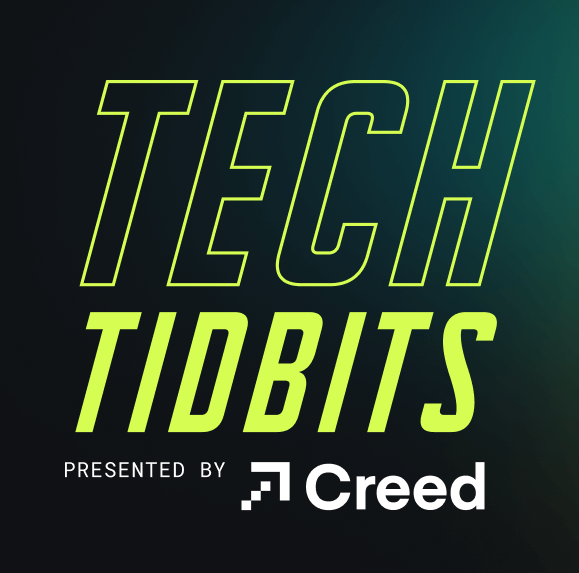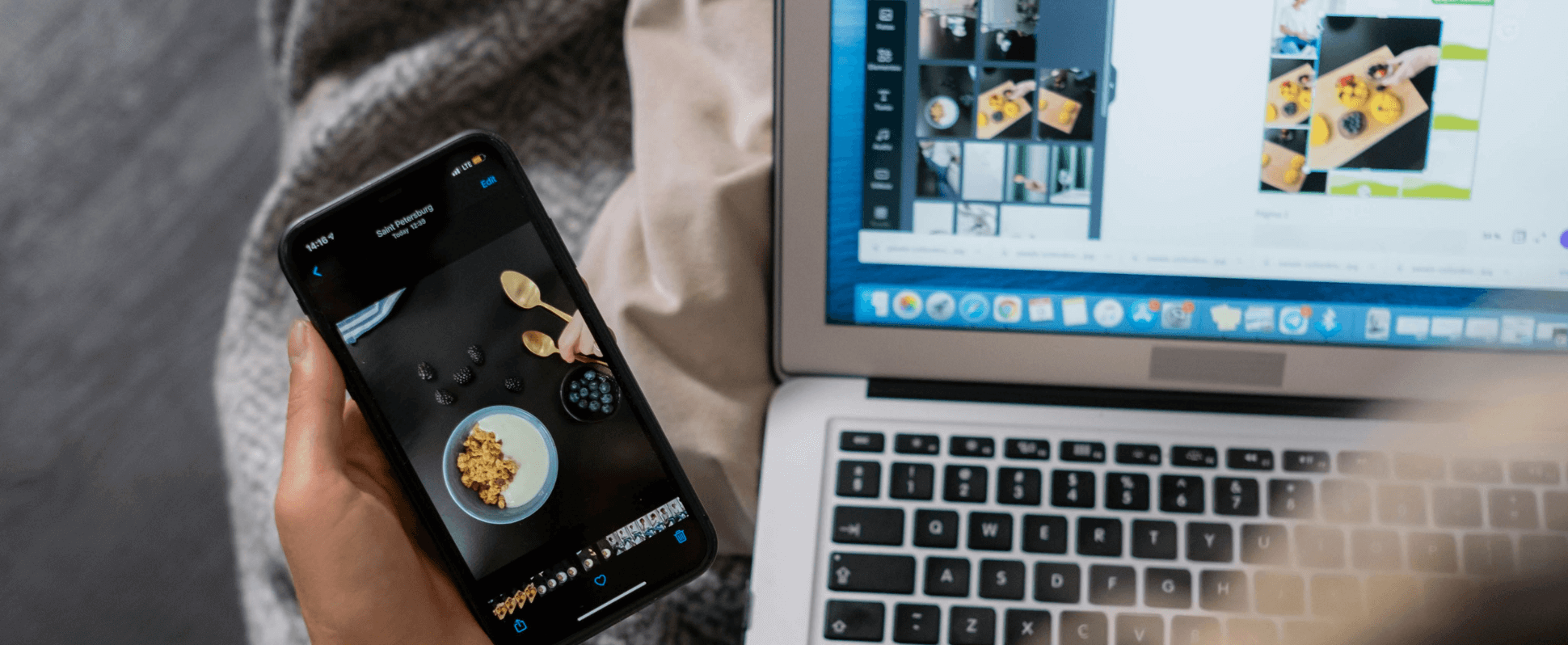Tech Tidbits: Amy Cullen, Creed’s Director of UX and Design

episode 04
What sets Creed’s design team apart?
In Tech Tidbits Episode 04, Chris Teigen interviews the Director of UX and Design at Creed, Amy Cullen. Amy discusses her journey from studying language to managing a design team. She highlights that successful design always starts with understanding the user and much more. Listen in for some hot tips and hear what she thinks about AI in UX and design!
To view more of what Amy’s team offers, check out our Design and Discovery pages!
Below is the transcript of the video
Chris: Hello, Amy. How are you?
Amy: I’m good. How are you? Good, good.
Chris: So, I’m sitting here today with the amazing Amy Cullen. She’s the director of Design and UX here at Creed Interactive. Thank you, Amy, for taking the time to answer a few questions about the design and UX world here at Creed Interactive. Are you ready for some questions?
Amy: Yeah, let’s go to it. Okay.
Chris: Alright. First question. How did your career path lead you to your current role as the design UX director here at Creed Interactive?
Amy: It’s a windy path. Um, so I, I like to say that I studied languages because I feel like that translates throughout the whole thing. Uh, I graduated with a double major in English and Spanish. Then I went into the publishing industry as a marketing assistant. Then I was like, this isn’t pay enough. And found out that web design was a thing and thought I would take some continuing ed classes ’cause this is like way back in 2003 ish. Um, and I liked it a lot ’cause it was like this unique thing that brought together art and technology, which were two of my passions. And so I was like, I’m gonna see if I can get a job in this. And I got a job as a webmaster, which I think we should bring that title back ’cause I missed that title. Um, and then I’ve been in, uh, technology since then. So I became a, um, front end designer and developer. And then I started exploring user experience. I was known as the CSS Queen for a while ’cause I was really obsessed with CSS and what it could do. ’cause I was really obsessed with CSS and what it could do. ’cause I was really obsessed with CSS and what it could do. ’cause I was really obsessed with CSS and what it could do.
Chris: That’s quite the path. All right. Next question. What does our design team at Creed do differently that differentiates us from other agencies?
Amy: Uh, one of my favorite things that I do on my team is I run creative hours biweekly and professional development hours on the opposite. Biweekly creative hours are a chance for my team to not focus on just work, but be able to kind of take the guardrails off and just be wild and free and creative. And so we do creative challenges where we’re kind of mocking up different apps or coming up with different user personas, uh, or doing branding, which is really fun. And then the professional development’s really fun too. We’ll do, um, books or videos or classes and then we get together and we talk about what was cool about it, what maybe wasn’t cool. And it’s not just design. We also dig into tech and ethics and lots more topics that kind of help fill out the whole role that we fill at Creed, which is pretty fun.
Chris: Great. All right. How does your team interact with the developers when working on projects together?
Amy: Um, I think we do a great job of interacting with each other. I think we have a lot of mutual respect for each other, especially for our expertise. So it’s always a conversation, never a here’s a to-do list. And so we’ve got, uh, some knowledge transfers. We’ve got Slack, which we can do, and then also in-person conversations. And I highly encourage informal, just reach out and talk through stuff versus make any assumptions or try to do things on your own. For sure.
Chris: So here’s a really general question. What makes for good digital design?
Amy: I think all good digital design starts with good UX. Um, so that’s part of why I’m so invested in growing UX at Creed. And we’ve been really invested in actually doing that over the last year and a half or so. Um, I think that in order to have good design, you need to be able to understand the users and understand the business and understand the why. And then it’s about making it pretty and functional and, and easy to use.
Chris: Yeah, the emphasis definitely shifted, uh, UX from UI for years ago. Right. That’s very interesting. Yeah. If you could go back in time 10 years as a designer, what would you do differently?
Amy: Um, I, you know, I thought about this and I was actually like nothing strangely. Um, I’m one of those people that I feel, uh, what needs to happen happens. And I think the way that I got here is really unique and it’s part of my strength is that I’m not traditionally trained. I learned on the job, I learned by following my passions, by taking classes extracurricularly. And I think that that gives me a really well-rounded, unique perspective that I really value. So I don’t think I would change anything.
Chris: That is a fantastic answer. Thank you.
Chris: Alright. How will AI impact designers?
Amy: Uh, well, it’s already happening. Uh, there’s a lot of conversations out there about the ethics of ai ’cause it’s stealing from a lot of artists and whether or not it’s truly making its own thing is highly debated. Um, so it’s, it’s affecting us not only just in, you know, the ethics of it, but also it’s, it’s really useful too. So there are AI tools that plug into Figma that plug into notion all these tools that we use. And I think those are immediately valuable because they increase the speed with which we can do things. Uh, it kind of takes off the, the things that are just so normal, literally an AI can do it.
Chris: Great. Um, the more creative things I think are at least further off if ever possible of thinking, you know, outside the box and creatively that really is so far reserved for humans and not necessarily ai. So I think we’re, we’re at least safe for a bit there.
Chris: Okay. Uh, what inspires you?
Amy: Uh, all forms of art. Um, I myself am a traditional beadwork, uh, creator, so I make a lot of beaded earrings and jewelry, but I love painting and photography and nature and, you know, anywhere you look, there’s inspiration. And I think that’s one of the really beautiful things about design is you can bring all of that into your inspiration and creative work. Um, so it’s not just the websites that say here’s the top 10 sites. It’s, you know, this plant that’s outside that has these beautiful color combos that can inspire. Right?
Chris: Yeah. Every time I talk to you, I learn something new about you.
Chris: Alright. What is often taken for granted about the design process?
Amy: I think a lot of people think that design is like pen to paper and you just start immediately making something. And there’s actually a really important part of the process, which is just sitting with it. Uh, which makes most people uncomfortable, especially business owners, I would say. But it’s really important to have the time to just kind of let it steep and make a really good tea versus trying to just get it immediately. Um, and I think a lot of people don’t realize that that’s a necessary part of creation.
Chris: Mm-Hmm. All right.
Chris: What is a common mistake that is made when designing digital products?
Amy: Assuming you know what the customer wants. Um, a lot of people come to product, to product making, whether it’s a head of a company that’s looking for tech to lead it or it’s the lead tech on a project. We assume we know what the users want and need. And while we might, you know, know, be able to guess, like 70% we don’t know unless we actually talk to them. So that’s why I’m so invested in UX and understanding and speaking to the actual people using the product because nine times outta 10 there’s stuff we never thought of.
Chris: Oh, that’s fantastic. All right.
Chris: You made it to the bonus round. So the bonus question is octopus or hummingbird?
Amy: I can’t pick, you can’t make me pick these. I love them both.
Chris: It’s one or the other.
Amy: No, seriously. This is like an internal crisis, right?
Chris: I, I, I refuse. I cannot. I choose both. There.
Chris: You have it. The stubborn Amy Cullen.
Chris: Thanks, Amy, for taking the time to talk to me. I appreciate it.
Amy: Sure. Thanks for having me.

